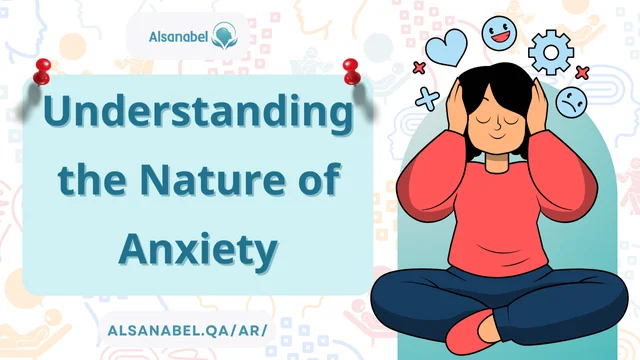
Anxiety is a complex and multifaceted emotional state that affects millions of people worldwide. While it is a natural response to stress and potentially dangerous situations, this disorder can sometimes become overwhelming and interfere with daily life. This article aims to provide a comprehensive understanding of it, explore its symptoms and triggers, and discuss practical ways to cope with it effectively.
Understanding the Nature of Anxiety

Defining
Anxiety is a feeling of apprehension or fear about a future event or an uncertain outcome. It is a normal and often beneficial reaction, preparing the body and mind to respond to challenges. However, when this disorder becomes excessive, it can lead to distress and dysfunction.
The Purpose
The primary purpose of this disorder is to activate the body’s “fight or flight” response, a survival mechanism that helps individuals react to perceived threats. This physiological response includes increased heart rate, heightened alertness, and a surge of energy. While this is helpful in dangerous situations, prolonged or intense one can be debilitating.
The Symptoms
Recognizing Common Signs
Anxiety symptoms vary widely and may manifest in physical, emotional, and cognitive ways. Common symptoms include restlessness, difficulty concentrating, rapid heartbeat, and excessive worry. Recognizing these symptoms early is crucial for effective management.
Physical Manifestations
Physically, this disorder can cause headaches, muscle tension, nausea, and even shortness of breath. These symptoms often occur during anxiety attacks, which are episodes of intense fear or panic that may last for several minutes or longer.
Cognitive and Emotional Effects
Cognitively, this disorder may lead to overthinking, indecisiveness, and intrusive thoughts. Emotionally, individuals may feel overwhelmed, irritable, or on edge, affecting their ability to relax or enjoy daily activities.
Triggers and Causes
Situational Triggers
Certain situations, such as public speaking, exams, or financial stress, can trigger this disorder. These are typically manageable and subside once the stressor is removed.
Chronic Triggers
For some, this disorder stems from long-term issues, such as unresolved trauma, ongoing stress, or medical conditions. Identifying these triggers is a key step in addressing the root cause of it.
Biological and Genetic Factors
Research suggests that genetics and brain chemistry play a role in this disorder. Imbalances in neurotransmitters, such as serotonin and dopamine, may contribute to heightened feelings of fear or worry.
Types of Anxiety
Generalized Anxiety
Generalized anxiety is characterized by excessive worry about everyday issues. Individuals with this condition often feel a constant sense of unease, even in non-threatening situations.
Panic Disorder
Panic disorder involves recurrent the attacks, during which individuals experience overwhelming fear accompanied by physical symptoms like chest pain and dizziness.
Social Anxiety
Social anxiety manifests as intense fear in social settings, often leading to avoidance of interactions and missed opportunities.
How to Manage in Daily Life
Lifestyle Adjustments
Making small yet consistent changes to one’s lifestyle can significantly reduce this disorder. Regular exercise, a balanced diet, and adequate sleep are foundational elements in managing stress levels.
Mindfulness Practices
Mindfulness and meditation are effective tools for calming the mind. Techniques such as deep breathing and grounding exercises can help individuals regain control during anxious moments.
Building a Support System
Connecting with trusted friends, family members, or support groups can provide emotional relief and a sense of belonging, reducing feelings of isolation.
Types of Professional Help
Therapeutic Approaches
Therapies such as cognitive-behavioral therapy (CBT) and exposure therapy are proven methods for treating this disorder. They aim to address negative thought patterns and gradually desensitize individuals to their triggers.
Medication Options
In severe cases, anxiety treatment may involve medication. Antidepressants, benzodiazepines, and beta-blockers are commonly prescribed to manage symptoms.
Combining Therapies
A combination of therapy and medication often yields the best results. This approach addresses both the psychological and physiological aspects of this disorder.
The Impact on Physical Health
Short-Term Effects
During an anxious episode, the body experiences an adrenaline surge, leading to symptoms like rapid breathing and sweating. While short-term effects are manageable, they can be exhausting if frequent.
Long-Term Consequences
Chronic anxiety can lead to serious health issues, including heart disease, gastrointestinal problems, and a weakened immune system. Addressing this disorder early can prevent these long-term complications.
Overcoming Through Practical Strategies
Identifying Triggers
Keeping a journal to track what’s causing it can help individuals identify patterns and develop coping mechanisms.
Developing Coping Skills
Techniques such as visualization, progressive muscle relaxation, and affirmations can provide relief during stressful situations.
Seeking Knowledge
Understanding the science behind this disorder empowers individuals to confront it with informed strategies rather than fear.
Common Questions

1. What is the difference between anxiety and anxiety disorder?
Anxiety is a natural reaction to stress, while an the disorder involves excessive and persistent worry that interferes with daily life.
2. What are the symptoms of anxiety disorders?
Symptoms include restlessness, fatigue, irritability, difficulty concentrating, rapid heartbeat, and physical discomfort.
3. How can I manage my anxiety?
Management techniques include practicing mindfulness, engaging in regular physical activity, seeking therapy, and, if necessary, using medication.
4. Are there medications for anxiety?
Yes, medications such as SSRIs, benzodiazepines, and beta-blockers are available to help manage severe symptoms.
5. Can anxiety cause physical symptoms?
Absolutely. this disorder often manifests physically, leading to symptoms like headaches, muscle tension, nausea, and heart palpitations.
Anxiety is a multifaceted condition that affects both the mind and body. Understanding it, its symptoms, and triggers is the first step toward managing it effectively. By adopting a combination of lifestyle changes, therapeutic interventions, and, when necessary, medication, individuals can lead fulfilling lives despite their challenges. Remember, seeking help is a sign of strength, and with the right support, overcoming it is entirely possible.

